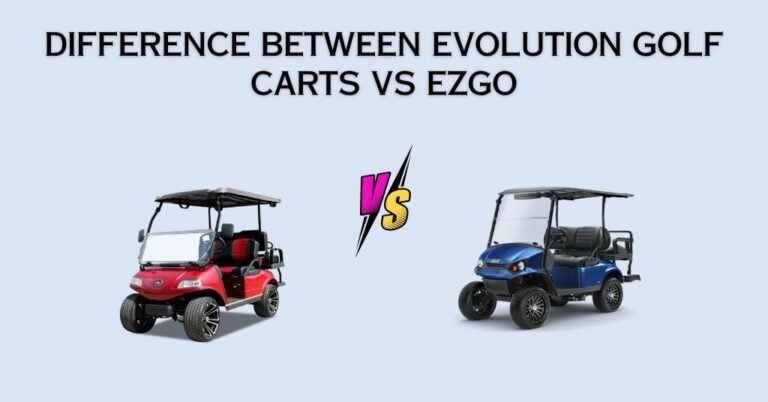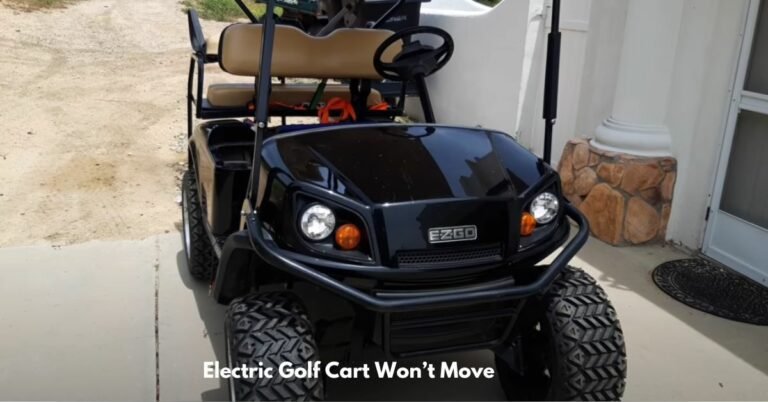7 most common Yamaha 48 Volt Charger Troubleshooting
Slow charging, corrosion, pack voltage, charger on-off problems, and receptacle issues are common with Yamaha 48 Volt charger users that prevent the charger from charging properly.
To troubleshoot the Yamaha 48 Volt Charger, you should:
- Ensure the correct electrical supply.
- Pick a compatible charger for your battery.
- Maintain clean battery terminals for secure connections.
- Dust-free receptacles and perfectly covered prongs.
- Replacements for the low-pack batteries.
Sit tight and go through how to troubleshoot Yamaha’s 48-volt golf cart charger –
1. Charger Not Powering Up
Is the charger not turning on after you connect it to the electrical outlet?
Reasons
- Power Source: The power source needs to be functional to supply electricity to the charger and turn it on.
- Power Cord or Connector: If the power cord or the connector cord is damaged the charger will never work.
- Blown Fuse: Locate the internal fuse of the charger and check if the fuse wire is broken or charred.
How to Fix?
A) Operating Power Source
Ensure the electrical outlet you plugged the charger into is operational.
B) Undamaged Power Cord:
Check the power cord and connector to make sure they are not frayed or damaged. You have to replace damaged cords for powering up the charger.
C) Fuse Replacement:
- Step 1: Open the charger casing and find out the internal fuse.
Note: The charger casing should be a small, tube-shaped glass or ceramic component with metal ends.
- Step 2: Attach multimeter probes on each metal end. If the multimeter indicates no continuity, the fuse is blown.
- Step 3: Replace the fuse with a new one that has the same amperage. The amperage is commonly marked in the fuse. It should be in between 15-20 amperage.
2. Charger Not Charging
If your charger is on but the battery is not charging, the problem most probably is with the battery.
Reasons:
- Low battery Voltage: To turn on the charger the battery must have a 25-30 volts charge. That’s why long-time uncharged batteries are not likely to wake up the charger.
- Corrosion: Battery emits sulphuric gases when it loses charge. These gases build up in the terminals over time and fail to take charge.
- Plug-In: The power cord of Yamaha 48-volt chargers has 2 ends. One is AC and the other one is DC. They should be plugged in in the right manner.
- Loose connections: If the connection between the charger and the battery is loose it will never charge.
How to Fix?
A) Brain Replacement:
If the battery voltage is low and your charger fails to detect the battery, replace the brain of your charger. It also fixes the slow startup of the charger.
B) Terminal Cleaning:
- Step 1: Clean the terminals with baking soda and water solution.
Note: The solution should have a toothpaste-like density.
- Step 2: Apply the paste and use a wire brush for scrubbing.
- Step 3: Use a paper towel to wipe the terminal.
- Step 4: Rinse the terminals with cold water and dry them completely.
- Step 5: Apply a battery terminal spray or a thin layer of petroleum jelly to the clean terminals for protection after cleaning.
- Step 6: Clean, corrosion-free terminals will ease the charging process.
C) AC-DC Recognition:
You will see AC and DC marks at the cords’ end. Plug the AC end into the power outlet. The DC end should be plugged into the battery.
D) Tighten Connections:
Tighten the connections between the charger and your Yamaha 48-volt battery. Secure connections ensure smooth charging.
3. Sudden Charger Shut off
Sometimes, the charger can keep shutting off before the battery is fully charged.
Reasons:
- Cooling Fan Malfunction: The cooling fan is the main culprit behind the sudden charger shutdown. If the fan isn’t working properly you will most likely hear unusual noises from inside the charger.
- Overheating: Sometimes the problem can be caused by long periods of charging. The charger overheats in such cases and it shuts off automatically.
How to Fix?
A) Placement:
Try to place the charger in a well-ventilated area to help it maintain the right temperature.
B) Cooling Fan Troubleshooting:
- Step 1: Remove the screws and open the casing of your battery.
- Step 2: The fan is near the circuitry and electronics, locate it.
- Step 3: Use a blower or compressed air can blow away dust from the fan. Give special care to the fan blades as they are more likely to catch rusty dirt.
- Step 4: Look for any visual damage like a broken blade or irregular movement.
- Step 5: Replace the cooling fan if needed.
4. Blinking Charger Light
A flashing red light is a symptom of serious problems with internal charger components.
Reasons:
- Voltage: An overcharged or undercharged battery is the main reason behind the flashing charger light.
- Wiring: Lose or incorrect wiring inside the charger or battery-charger connections can also be the cause of blinking lights.
How to Fix?
- Correct Voltage: If the batteries are overcharged you need to run the golf cart until the battery reaches safe voltage. On the other hand, undercharged batteries need a compatible charger or battery replacement.
- Charger with Proper Wiring: If you notice the charger’s wiring has been damaged or somehow misaligned, you should get a new charger instantly.
5. Slow Charging
Taking too much time to charge the battery is one of the most commonly encountered concerns with Yamaha 48-volt chargers.
Reasons:
- Power Supply: The power source of the charger must have sufficient voltage and amperage to charge the battery quickly.
- Damaged Cord: Damaged cord or connectors can not ensure proper electrical flow and it takes longer to charge your batteries.
- Overly Discharged Battery: If the battery you are trying to charge is deeply discharged it will take too much time.
How to Fix?
- Appropriate Power Source: The charger for Yamaha 48 volt needs 110-120 volts from the power source to work efficiently.
- Discharged Battery: To avoid slow charging try to plug the battery in charge before it is deeply discharged. The charging time highly depends on the charge state of the battery.
6. Receptacle Issues
There can be two reasons for the receptacle malfunction in the golf cart charger-
Reasons:
- Dirt Buildup: If there is any buildup in the receptacle, the current flow will not be smooth. Both the new and old batteries will face difficulties in this case.
- Prong Covering: The plastic covering over the prongs ensures a secure connection for a better charging experience. Any damage in that covering will create charging issues.
How to Fix?
- Cleaning: Clean the receptacle with a soft brush and remove all the dust possible. You can also use an air can or blower to ease the process.
- Inspect Prongs: Damaged or worn covering prevents proper charging. Replace the receptacle or the damaged parts.
7. Low Pack Voltage
Low battery voltage can lead you to face
Reasons
- Failing Batteries: The primary reason for low pack voltage is aging or failing batteries. Lead-acid batteries deteriorate and lose their ability to hold charge effectively. When one or more batteries in the pack fail, it can lower the overall pack voltage.
- Malfunctioning Charger: A malfunctioning charger can lead to low pack voltage. If the charger is not delivering the correct voltage or current to the battery pack, it can prevent the batteries from reaching their maximum charge.
How to Fix?
- Charger Compatibility: For a Yamaha 48-volt golf cart you have to use a 48-volt charger.
- Battery Health: Test the battery pack’s voltage using a voltmeter. A Yamaha 48-volt system should read within the 48-volt range when fully charged. Any battery that falls below this range should be replaced.
Final Takeaways – Yamaha 48 Volt Charger Troubleshooting
To summarize our Yamaha 48 Volt charger troubleshooting –
- Low pack voltage, receptacle issues, corrosion, and malfunctioned wiring are most commonly found.
- Keeping the charger clean and well-maintained is the primary measure to take to avoid conflicts with your golf cart battery.
- As soon you as realize your Yamaha 48-volt charger is completely damaged, get a replacement.
WATCH >> 2003 Yamaha G22, 48 Volt Electric – Not Moving, Replace Solenoid

![Troubleshooting Guide For Star EV Golf Cart Problems [2024!]](https://www.craborchardgolfclub.com/wp-content/uploads/2024/01/Star-EV-Golf-Cart-Problems-768x480.jpg)
![Evolution D3 Golf Cart Review – features, pros & Cons in [2023]](https://www.craborchardgolfclub.com/wp-content/uploads/2023/09/Evolution-D3-Golf-Cart-Review-768x512.webp)



